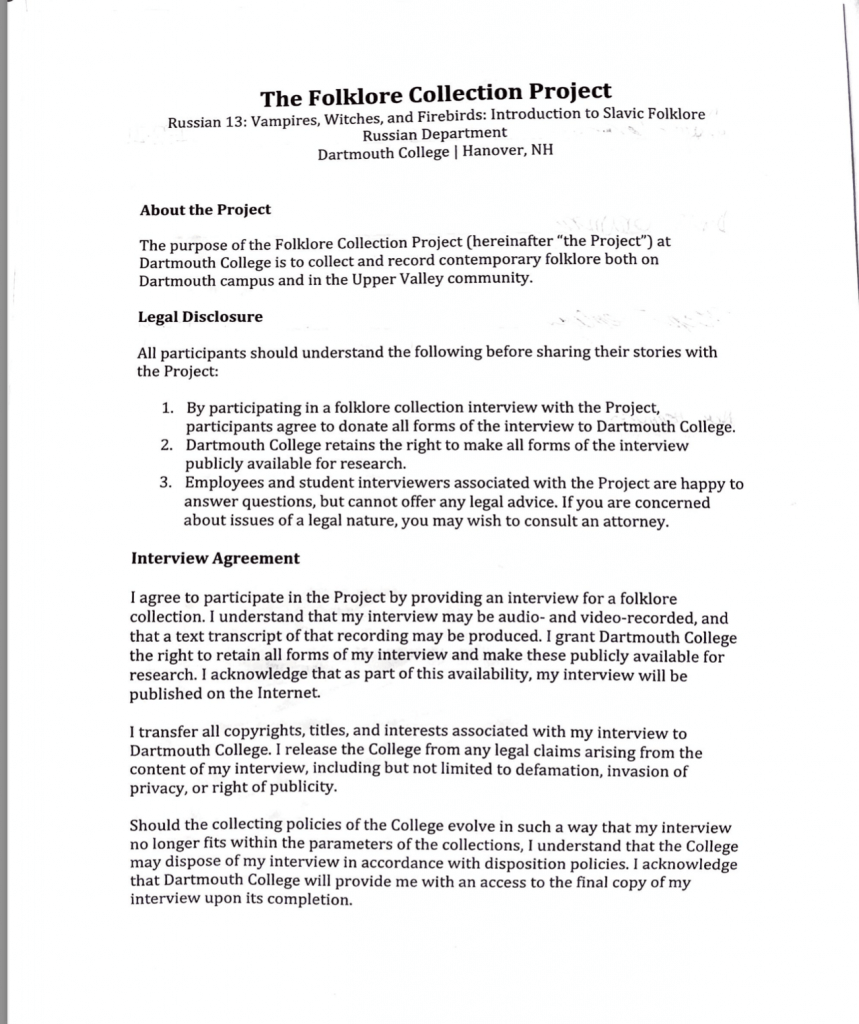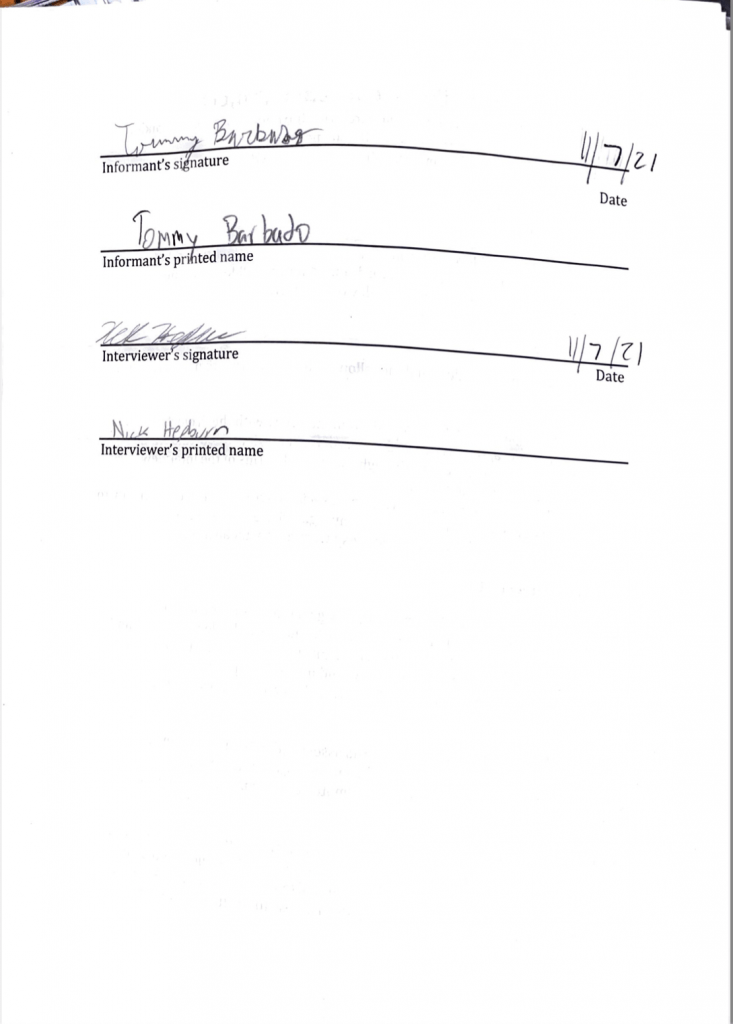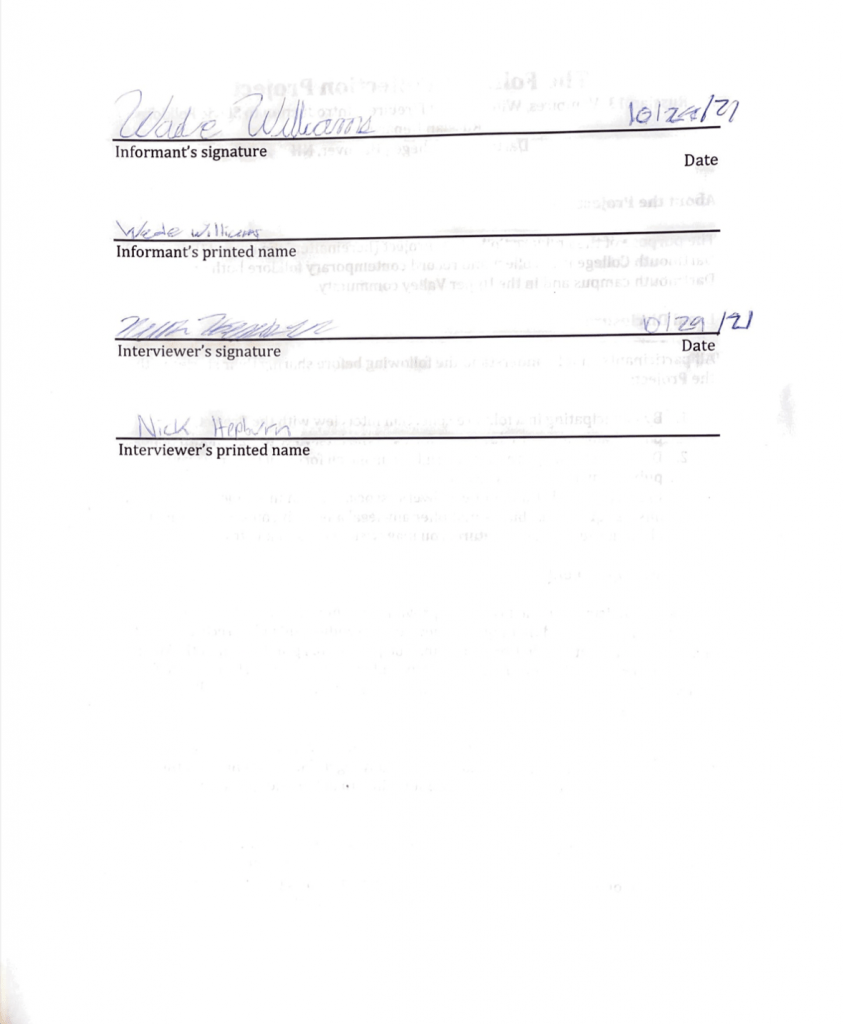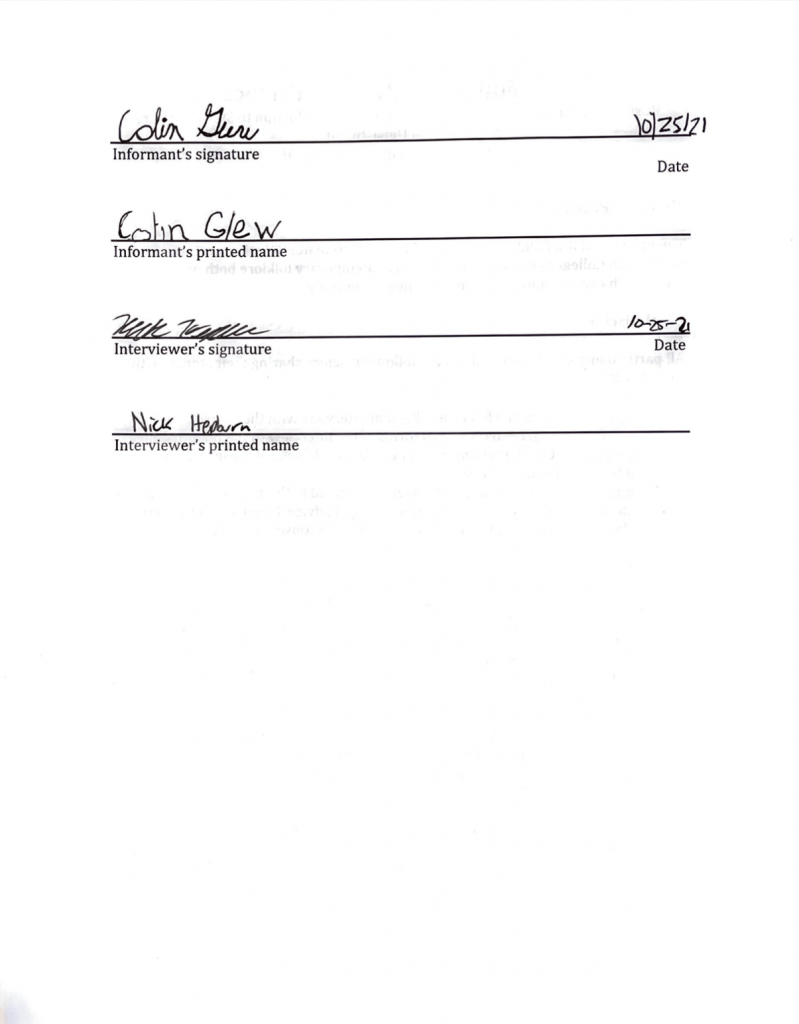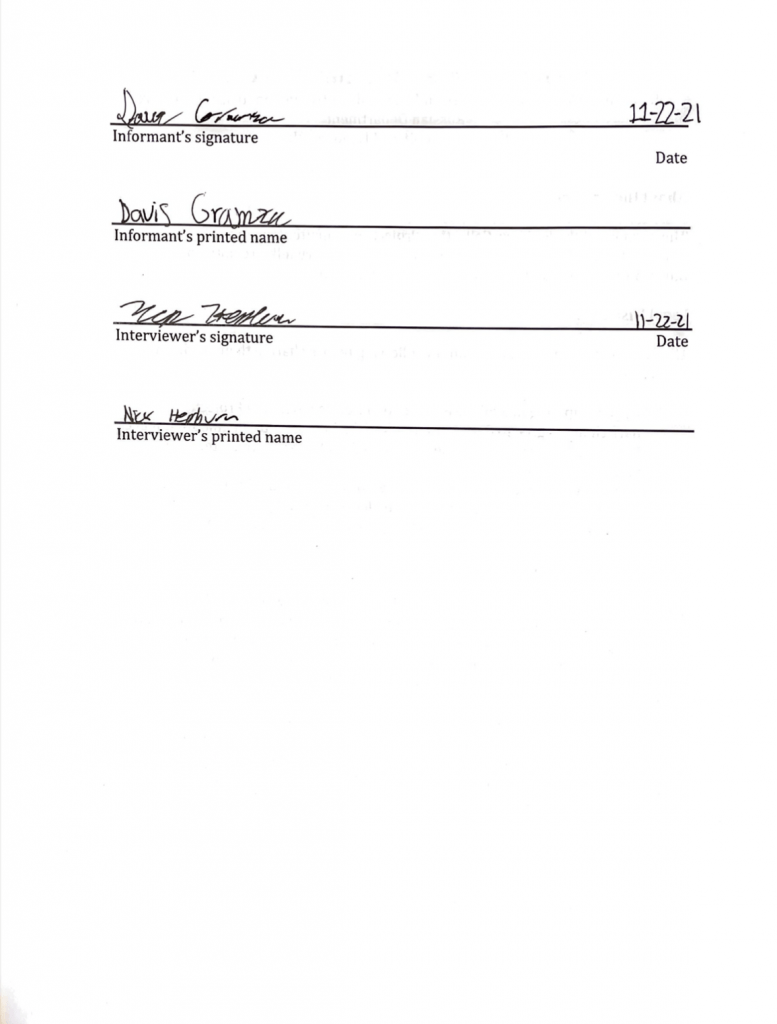General info:
- Type of Lore: Customary, Dances
- Language: English
- Country of Origin: United States
- Informant: M.A.
- Date collected:11/8/2021
Informant Data: M.A. is a member of the class of 2021 at Amherst College where he plays football. He returned for the 2021 season after the Covid-19 Pandemic cancelled his senior season. He is originally from Cheshire Connecticut where his father is a high school football coach. Being the son of a football coach, the sport has always been a huge part of his life and upbringing.
Context:
- Cultural: Being a division 3 school, there are no scholarships for athletics. The athletes on these teams are playing primarily for fun and their love of the sport. M.A. plays for this reason and believes many of his teammates share his passion. Amherst is a competitive school in their collegiate division.
- Social: A handful of individuals on the team are from Illinois and therefore fans of the Chicago Bears. In 2018 the Chicago bears started a tradition where they would hire a DJ, have colorful lights set up, and have a dance party amongst the team following wins both home and on the road. Videos of these celebrations were often posted to the internet and spread widely.
Item: Following a victory, Amherst celebrates with their own version of “Club Dub”. Someone on the team, typically a senior or captain, takes control of the speakers and plays music in the locker room. Another individual (or a few) will flip the lights in the locker room on and off rapidly to create a sort of strobe light. Others will take their phones out and flip the flashlights on and off to add to the light show. In this environment the teammates dance and celebrate their win together.
Transcript: “We do a sort of celebration after each of our wins. We call it Club Dub and it’s based on the Club Dub that the Chicago Bears are known to do. It started in 2018 when the Bears started doing it and someone on the team brought it up and thought it would be a fun way for our program to celebrate victories. We obviously don’t have the same funding as an NFL team so we just have one of the old guys take aux and create the light effect by flashing the lights on and off in a strobe and using phone lights. “
Informant’s comments: It is a fun way to celebrate a win and let loose with teammates after a hard week of preparation and game.

